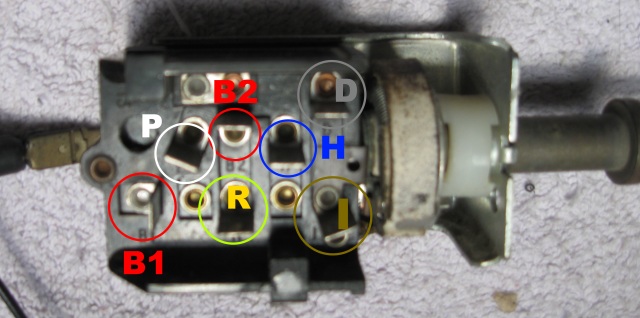Hooking up the required emissions on your AMC 6 isn't hard, just do it one function at a time.
To start, pick up some T's and a lot of 5/32 hose and add each system until you're done. Long runs do better with rigid nylon tube, commonly available at any auto parts store. It has less volume and is less prone to collapse. A short bit of hose makes a fine connector on the ends.
You'll probably need a bit of 3/8 and 1/2 for the PCV valve and canister.
Pulse-Air and Smog Pump systems will be discussed later.
EGR: The emissions port if you have it, or the distributor port if not, goes through the CTO valve so it's open hot, through the vacuum temperature switch on the air cleaner, a delay valve slowing opening, and on to the EGR valve. The EGR valve uses a combination of vacuum and back pressure to control gas flow and older types had a separate back pressure valve.
Canister: One hose goes from the emissions port, through the CTO (you can just tap into the EGR hose at this point), then to a delay valve slowing opening, and to the control diaphragm on the canister. Another "Purge" hose goes from a port on the canister that is controlled by the first hose and T's into the PCV port. The remaining ports go to the tank vent and the carburetor vent if equipped.
PCV: This is a big hose. From the valve, to a T for the canister, and into the large port in the back of the carb just for PCV.
Distributor: From the distributor port (or spark port, or ported vacuum) across the engine to a purple Motorcraft delay valve that usually has "dist" and " carb" printed on it then to the distributor. If you have no emissions port on the carb, place emissions items on this line next to the carb. The delay valve is usually 2-3" from the distributor and no branches should come between it and the distributor.
TAC (Air cleaner heat riser): There is usually a vacuum port on the carb designed for the TAC, the hose goes from there to a special air valve in the cleaner, then to the motor on snorkel. Many times a reverse delay valve or a check valve (slowing the closing of the motor) is between the valve and the motor.
If you are using an open element filter, cap the port.
Some air cleaners may have a second door in the snorkel. This should get a delay or check valve as well and connect to a T between the carb and the air valve in the air cleaner. It should open as soon as the engine starts and remain open until the engine is turned off.
Vacuum accessories: The 4wd switch, if equipped, and the heater go to the vacuum port near the runner to cylinder 6.
Brake Booster: The brake booster goes to a large port below the carburetor.
Economy Indicator: An economy gauge, vacuum gauge, or economy light is generally plugged into a dedicated port in the intake manifold if available as bleed from another source can affect the reading. If none is available, the brake booster line or accessory location are preferable. If there is an inside gauge then use a small diameter hard line to avoid pinches and kinks.
 Tuesday, July 17, 2012 at 8:02PM
Tuesday, July 17, 2012 at 8:02PM  Ben M. |
Ben M. |  Post a Comment |
Post a Comment | 